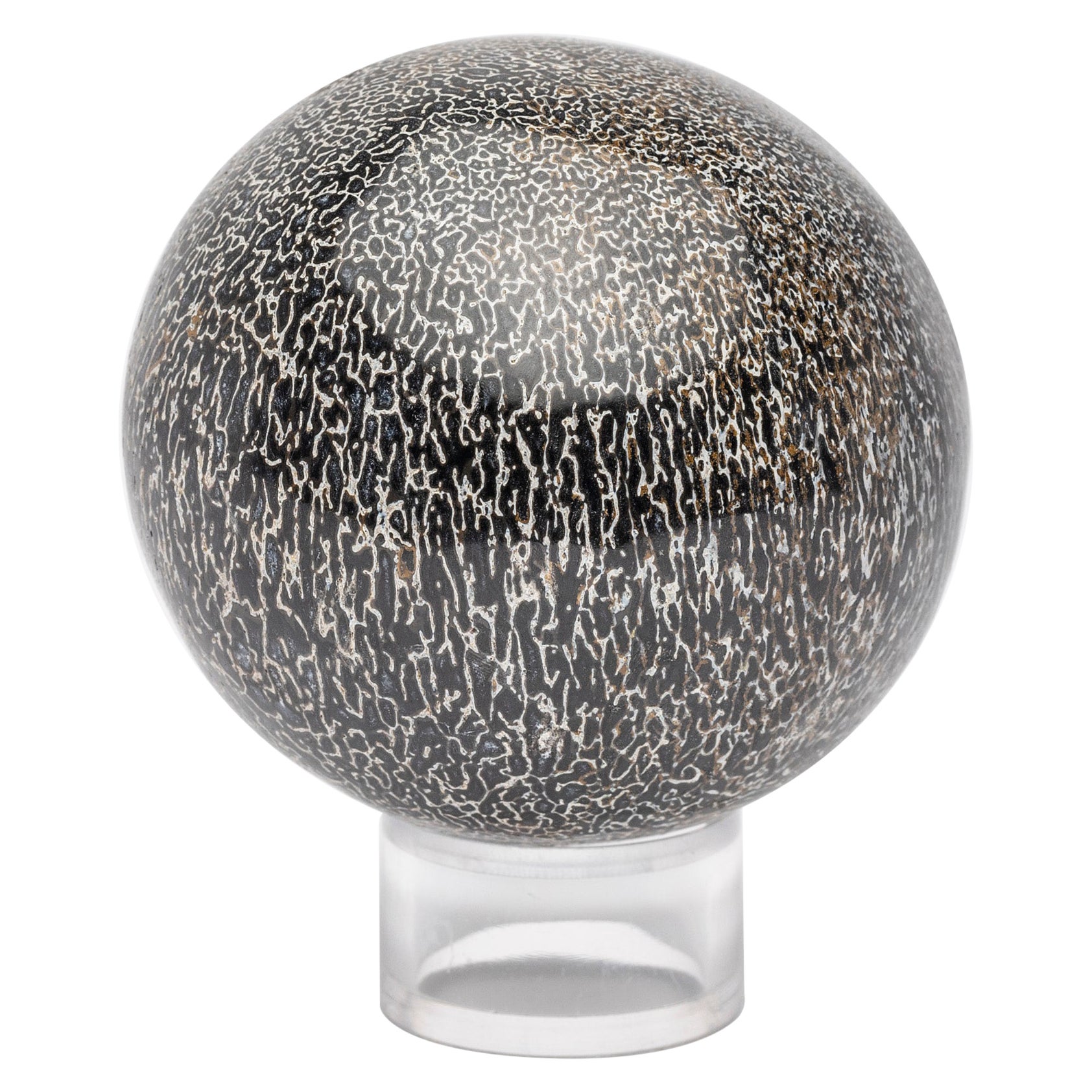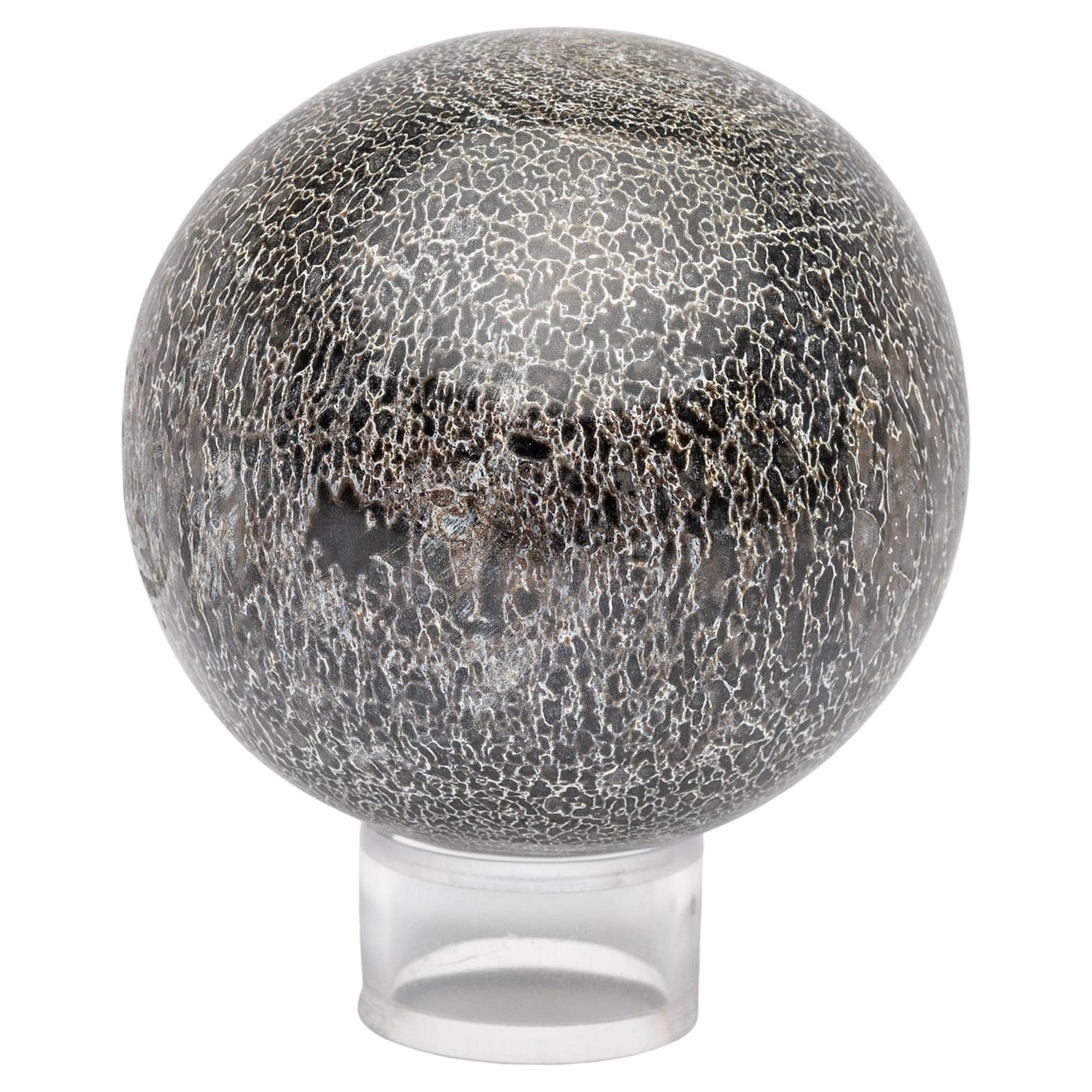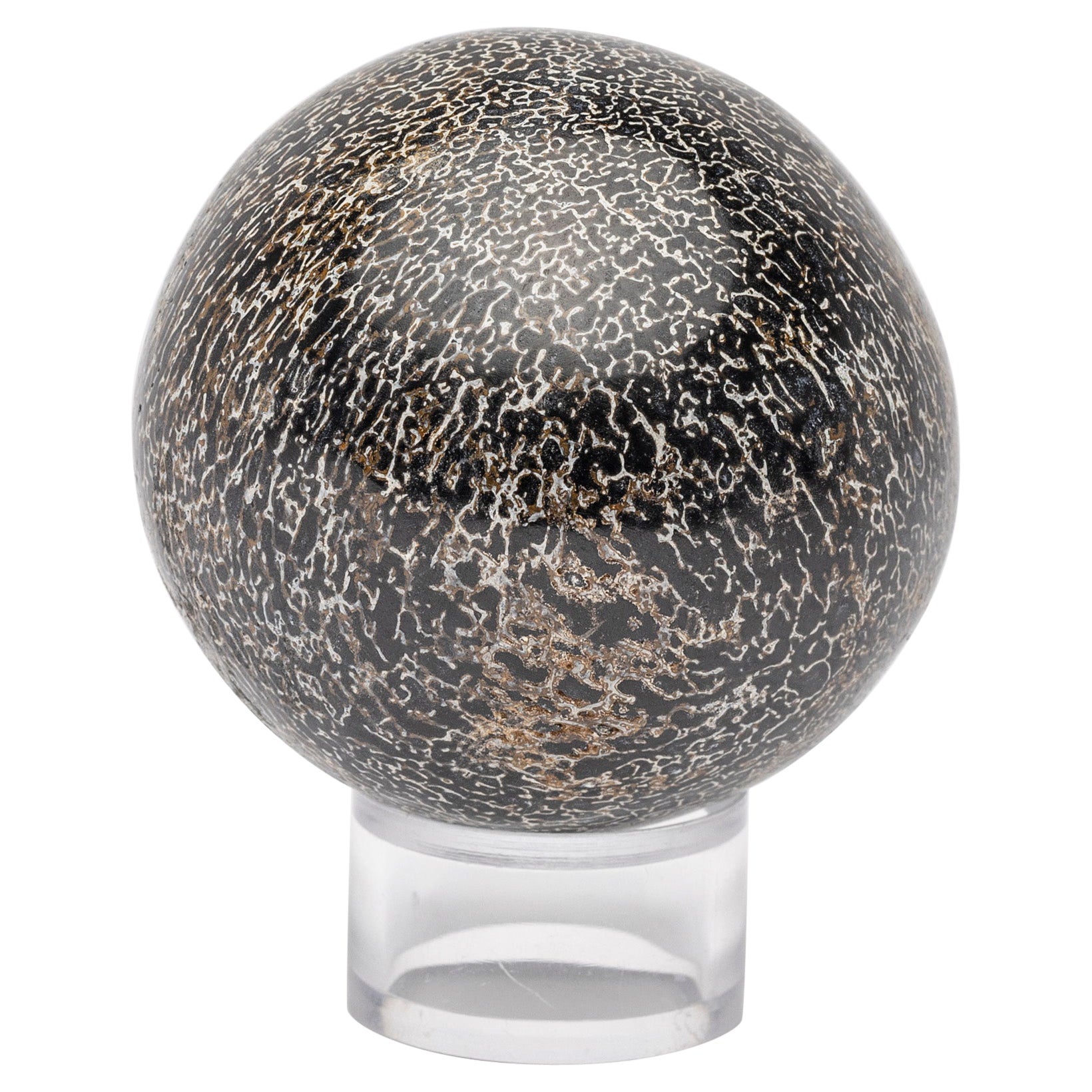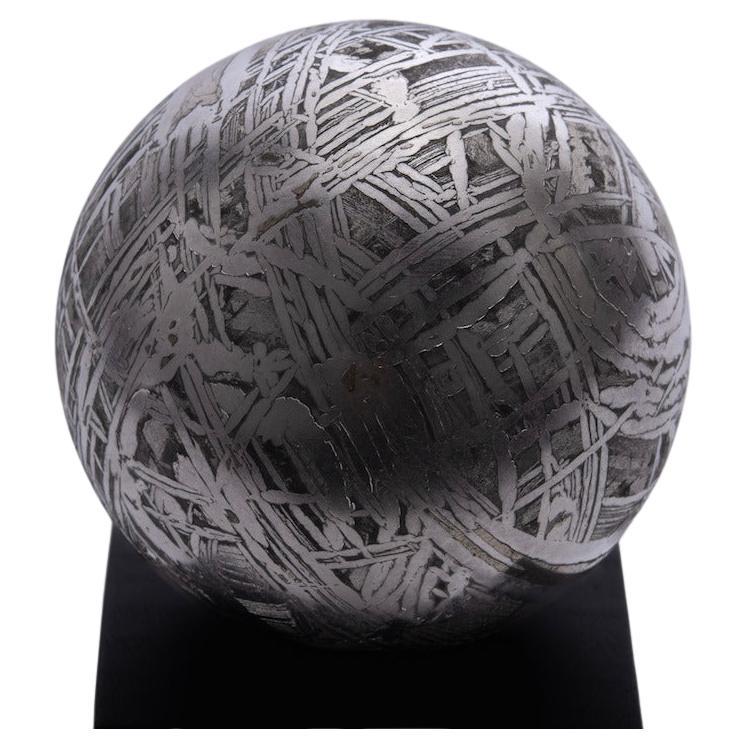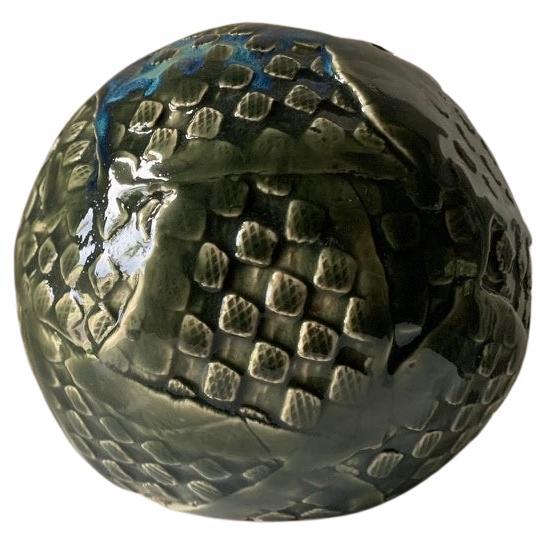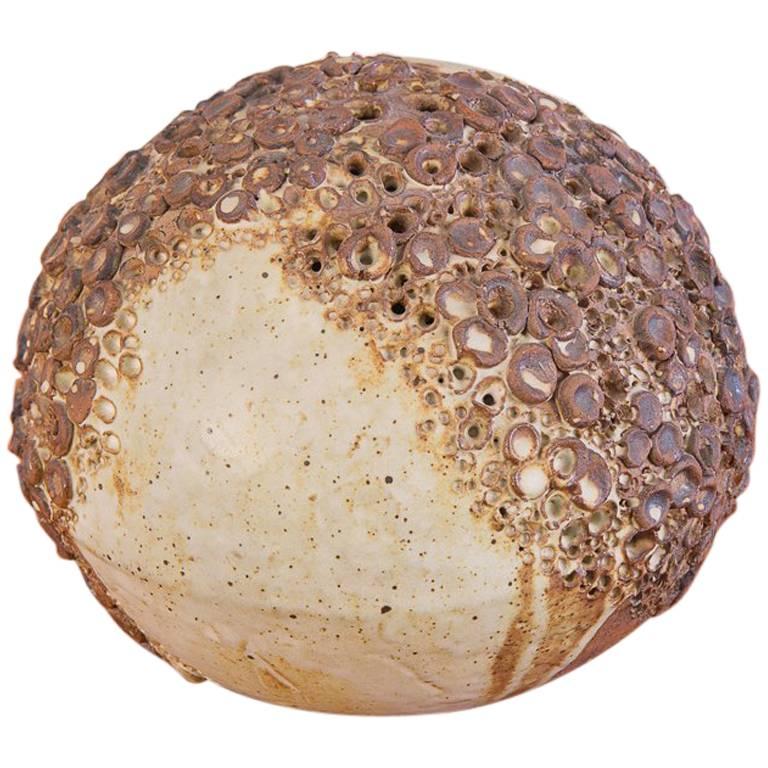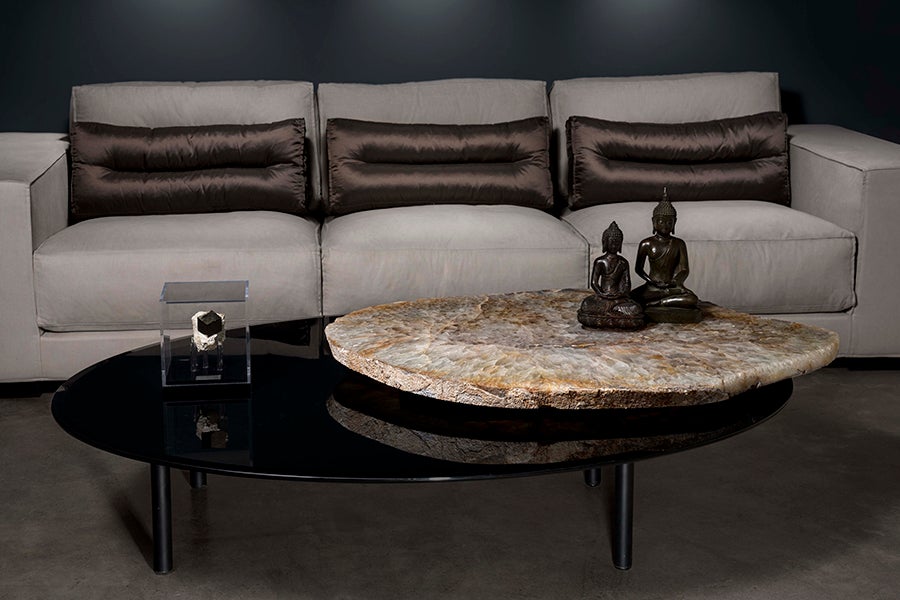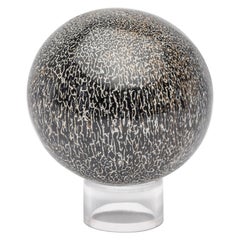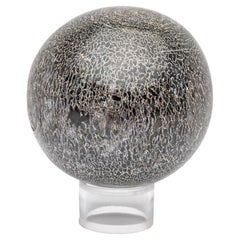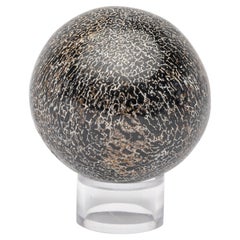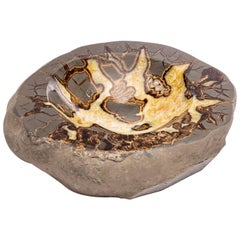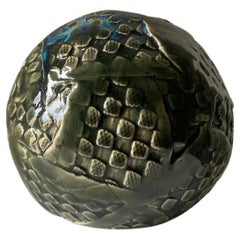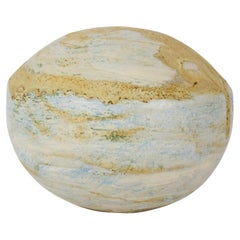Want more images or videos?
Request additional images or videos from the seller
1 of 7
210 Million Y/O Fossil Sauropods Sphere
$795
£599.96
€686.87
CA$1,121.21
A$1,230.95
CHF 642.19
MX$14,896.24
NOK 8,048.86
SEK 7,584.14
DKK 5,127.29
About the Item
Name: Sauropods
Period: Triassic-Late Cretaceous
(approximately 210 and 66 million years ago)
Sauropods (Sauropoda) are an infraorder of sauropodomorph dinosaurs that lived from the Late Triassic to the Late Cretaceous (approximately 210 and 66 million years ago, they lived in the Americas, Asia, Europe, Africa, Oceania and Antarctica. They were herbivorous and they were quadrupedal.
Sauropods had very long necks, long tails, small heads (relative to the rest of their body), and four thick, pillar-like legs. They are notable for the enormous sizes attained by some species, and the group includes the largest animals to have ever lived on land. They were
The name Sauropoda was coined by Othinel Charles Marsh in 1878, and is derived from Ancient Greek, meaning "lizard foot".[15] Sauropods are one of the most recognizable groups of dinosaurs, and have become a fixture in popular culture due to their impressive size.
- Creator:Pietra Gallery (Workshop/Studio)
- Dimensions:Height: 2.92 in (7.4 cm)Diameter: 2.92 in (7.4 cm)
- Style:Organic Modern (In the Style Of)
- Materials and Techniques:
- Place of Origin:
- Period:
- Date of Manufacture:2023
- Production Type:New & Custom(One of a Kind)
- Estimated Production Time:Available Now
- Condition:
- Seller Location:Polanco, MX
- Reference Number:Seller: DIHU-22113018081stDibs: LU2520333964352
PIETRA GALLERY LLC
Established in 2008 in the heart of Polanco, Mexico City, Pietra Gallery first gained a reputation as a leading global dealer in fossils and minerals. Working with unconventional elements, sourced from uninhabitable deserts, tropical islands, snow-capped mountaintops and Nordic forests, the gallery’s range now includes unique pieces of furniture, lighting, art objets, homeware and exclusive artworks incorporating these rare discoveries.
Representing an elite group of international artists and designers, Pietra Gallery has become a pioneer in redefining how Earth’s formations can be repurposed into functional items and artworks for a contemporary home.
About the Seller
4.9
Vetted Professional Seller
Every seller passes strict standards for authenticity and reliability
Established in 2008
1stDibs seller since 2017
164 sales on 1stDibs
Typical response time: 1 hour
- ShippingRetrieving quote...Shipping from: Polanco, Mexico
- Return Policy
Authenticity Guarantee
In the unlikely event there’s an issue with an item’s authenticity, contact us within 1 year for a full refund. DetailsMoney-Back Guarantee
If your item is not as described, is damaged in transit, or does not arrive, contact us within 7 days for a full refund. Details24-Hour Cancellation
You have a 24-hour grace period in which to reconsider your purchase, with no questions asked.Vetted Professional Sellers
Our world-class sellers must adhere to strict standards for service and quality, maintaining the integrity of our listings.Price-Match Guarantee
If you find that a seller listed the same item for a lower price elsewhere, we’ll match it.Trusted Global Delivery
Our best-in-class carrier network provides specialized shipping options worldwide, including custom delivery.More From This Seller
View All210 Million Y/O Fossil Sauropods Sphere
By Pietra Gallery
Located in Polanco, CDMX
Name: Sauropods
Period: Triassic-Late Cretaceous
(approximately 210 and 66 million years ago)
Sauropods (Sauropoda) are an infraorder of sauropodomorph dinosaurs that lived from the Late Triassic to the Late Cretaceous (approximately 210 and 66 million years ago, they lived in the Americas, Asia, Europe, Africa, Oceania and Antarctica. They were herbivorous and they were quadrupedal.
Sauropods had very long necks, long tails, small heads (relative to the rest of their body), and four thick, pillar-like legs. They are notable for the enormous sizes attained by some species, and the group includes the largest animals to have ever lived on land. They were
The name Sauropoda was coined by Othinel Charles Marsh in 1878, and is derived from Ancient Greek, meaning "lizard foot...
Category
2010s Mexican Organic Modern Natural Specimens
Materials
Acrylic
210 Million Y/O Fossil Sauropods Sphere
By Pietra Gallery
Located in Polanco, CDMX
Name: Sauropods
Period: Triassic-Late Cretaceous
(approximately 210 and 66 million years ago)
Sauropods (Sauropoda) are an infraorder of sauropodomorph dinosaurs that lived from the Late Triassic to the Late Cretaceous (approximately 210 and 66 million years ago, they lived in the Americas, Asia, Europe, Africa, Oceania and Antarctica. They were herbivorous and they were quadrupedal.
Sauropods had very long necks, long tails, small heads (relative to the rest of their body), and four thick, pillar-like legs. They are notable for the enormous sizes attained by some species, and the group includes the largest animals to have ever lived on land. They were
The name Sauropoda was coined by Othinel Charles Marsh in 1878, and is derived from Ancient Greek, meaning "lizard foot...
Category
2010s Mexican Organic Modern Natural Specimens
Materials
Acrylic
210 Million Y/O Fossil Sauropods Sphere
By Pietra Gallery
Located in Polanco, CDMX
Name: Sauropods
Period: Triassic-Late Cretaceous
(approximately 210 and 66 million years ago)
Sauropods (Sauropoda) are an infraorder of sauropodomorph dinosaurs that lived from the Late Triassic to the Late Cretaceous (approximately 210 and 66 million years ago, they lived in the Americas, Asia, Europe, Africa, Oceania and Antarctica. They were herbivorous and they were quadrupedal.
Sauropods had very long necks, long tails, small heads (relative to the rest of their body), and four thick, pillar-like legs. They are notable for the enormous sizes attained by some species, and the group includes the largest animals to have ever lived on land. They were
The name Sauropoda was coined by Othinel Charles Marsh in 1878, and is derived from Ancient Greek, meaning "lizard foot...
Category
2010s Mexican Organic Modern Natural Specimens
Materials
Acrylic
Beautiful One of a Kind in Organic Shape Septarian Bowl from Utah
By Pietra Gallery
Located in Polanco, CDMX
Beautiful one of a kind in organic shape Septarian bowl from Utah.
Category
2010s Mexican Organic Modern Decorative Bowls
Materials
Other
Beautiful One of a Kind in Organic Shape Septarian Bowl from Utah
By Pietra Gallery
Located in Polanco, CDMX
Beautiful one of a kind in organic shape Septarian bowl from Utah.
Category
2010s Mexican Organic Modern Decorative Bowls
Materials
Other
Pair of Belgium Calcite Septarian Nodule Natural Form on Custom Metallic Stand
By Pietra Gallery
Located in Polanco, CDMX
Pair of Belgium calcite Septarian nodule natural form on metallic base.
Its name comes from Latin “Septem”, meaning seven years. This is because these nodules tend to crack at 7 p...
Category
2010s Mexican Organic Modern Natural Specimens
Materials
Metal
You May Also Like
Extraterrestrial Iron Sphere from the Aletai Meteorite
Located in London, GB
A magnificent meteorite sphere, cut from the famous Aletai meteorite and polished to reveal the shimmering iron-nickel matrix and the beautiful crystalline Widmanstätten pattern — a ...
Category
Antique 15th Century and Earlier Natural Specimens
Materials
Iron
Orb Studio Pottery Sculpture, Olive
Located in Saint Petersburg, FL
Handmade orb studio pottery sculpture with ribbed textured body. Predominantly glazed in olive green with highlighted by hints of blue. Spherical shape & dimensions make it a versati...
Category
21st Century and Contemporary American Organic Modern Abstract Sculptures
Materials
Clay
Earthenware Sphere Table Sculpture
Located in Brooklyn, NY
Hand-built earthenware sphere sculpture. Beautiful, rounded ceramic form adorns a band of perforations, evoking textures from the natural world. Glaze layering has variegated densiti...
Category
Vintage 1960s Mid-Century Modern Ceramics
Materials
Ceramic
Studio Ceramic "Globe" Glazed Sculpture
Located in Los Angeles, CA
Spherical glazed sculpture. This studio ceramic features a blueish-green swirled glaze throughout the body and a mustard drip glaze around the top.
...
Category
Mid-20th Century American Mid-Century Modern Figurative Sculptures
Materials
Ceramic
Large Genuine Polished Petrified Wood Sphere from Madagascar (6.75", 15.4 lbs)
Located in New York, NY
Top quality, center-of-a-choice petrified wood sphere from Madagascar. This incredible specimen is shaped from a solid piece of petrified wood. Hand-polished to a mirrored finish. It has an amazing pattern with vibrant hues of brown, red, and orange.
Fossilized Petrified Wood, which is also known as Agatized Wood...
Category
21st Century and Contemporary Malagasy Natural Specimens
Materials
Petrified Wood
$2,880 Sale Price
20% Off
Solid Marble Decorative Sphere on Chrome Base
Located in San Diego, CA
Beautiful solid brown marble decorative sphere on chrome base, circa 1970s. The piece is in very good condition with no chips or cracks; it has a nic...
Category
Late 20th Century Pakistani Mid-Century Modern Abstract Sculptures
Materials
Marble
$380 Sale Price
20% Off
More Ways To Browse
Acrylic Sphere
Mineral Display
Citrine Geode
Rock Crystal Flower Sculpture
Amethyst Cathedral
Quartz On Stand
Red Coral Decorative
Glass Flower Sculptures
Solomon Islands
Amethyst On Stand
Coral On Base
Crystal Obelisks
Octopus Antique
Shark Sculpture
Stone Fish
Large Geode Sculpture
Meteorite Sculpture
Ammonite Fossil Sculpture
